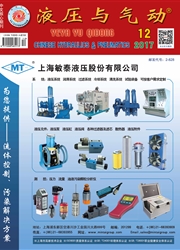

 中文摘要:
中文摘要:
针对淮北平原地质土成层性和不均匀性显著的特点,提出了多元互层地基分层和承载力分层计算的BP神经网络预测方法。以钻探取样、静力触探试验和螺旋板载荷试验、平板载荷试验原位测试结果进行对比,认为比贯入阻力Ps值可以作为互层地基分层和地质土承载力预测的评价指标,并以此为基础采用BP神经网络的梯度下降算法和共轭梯度算法分别建立土质分层和承载力预测的模型,并将两种算法的计算结果进行了对比分析。结果表明:比贯入阻力值可作为淮北平原互层地基的土质分层和承载力预测的评价指标;BP神经网络的梯度下降算法和共轭梯度算法均对土质类型的识别和地基承载力的预测具有良好的效果,满足实际工程的精度要求,但是前者的计算效率明显低于后者。
 英文摘要:
英文摘要:
According to the features of stratification and obvious inhomogeneity in geological soil in Huaibei plain, BP neural network prediction method for stratification and bearing capacity calculation of multiple cross-bedded foundation was proposed. By comparing the results of drill sampling, static cone penetration tests and screw plate tests, plate loading tests, penetration resistance ps value was found as an evaluation index for stratification and bearing capacity prediction of cross-bedded foundation. Moreover, gradient descent algorithm and conjugate gradient algorithm BP neural network models were obtained, and the calculation results of the two algorithms were comparatively analyzed. The results show that penetration resistance value can be taken as an evaluation index for stratification and bearing capacity prediction of cross-bedded foundation in Huaibei plain. Gradient descent algorithm and conjugate gradient algorithm BP neural network models have good results for soil identification and bearing capacity determination, which can meet the accuracy requirements of actual engineering. However, the computational efficiency of gradient descent algorithm is significantly lower than that o{ conjugate gradient algorithm.
 同期刊论文项目
同期刊论文项目
 同项目期刊论文
同项目期刊论文
 Analysis on Supporting Stability for Track Subgrade Dynamic Response In-situ Test Device Based on NS
Analysis on Supporting Stability for Track Subgrade Dynamic Response In-situ Test Device Based on NS 期刊信息
期刊信息
